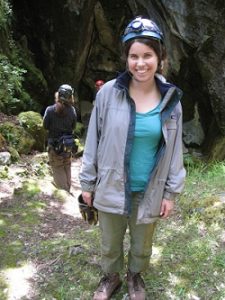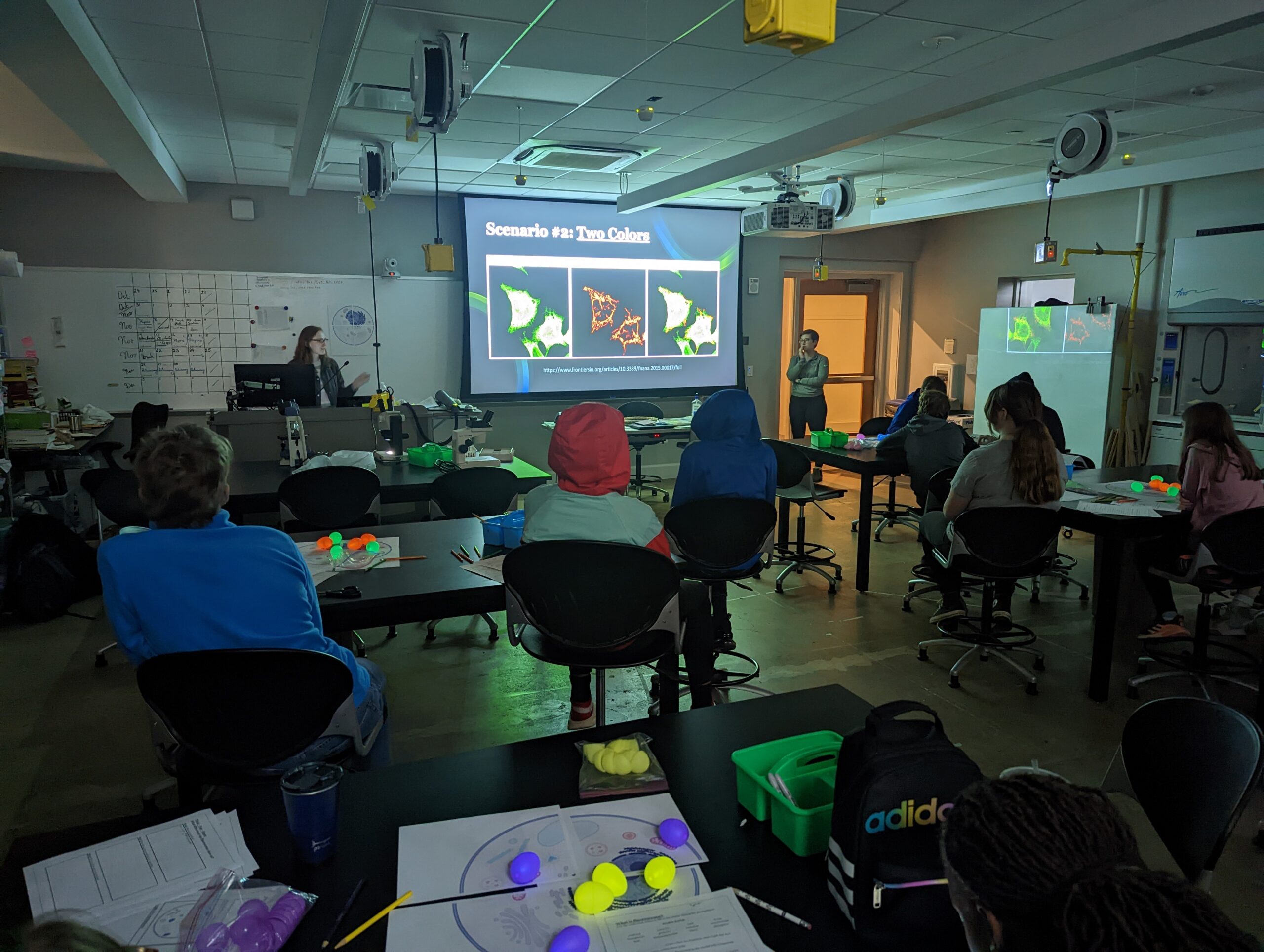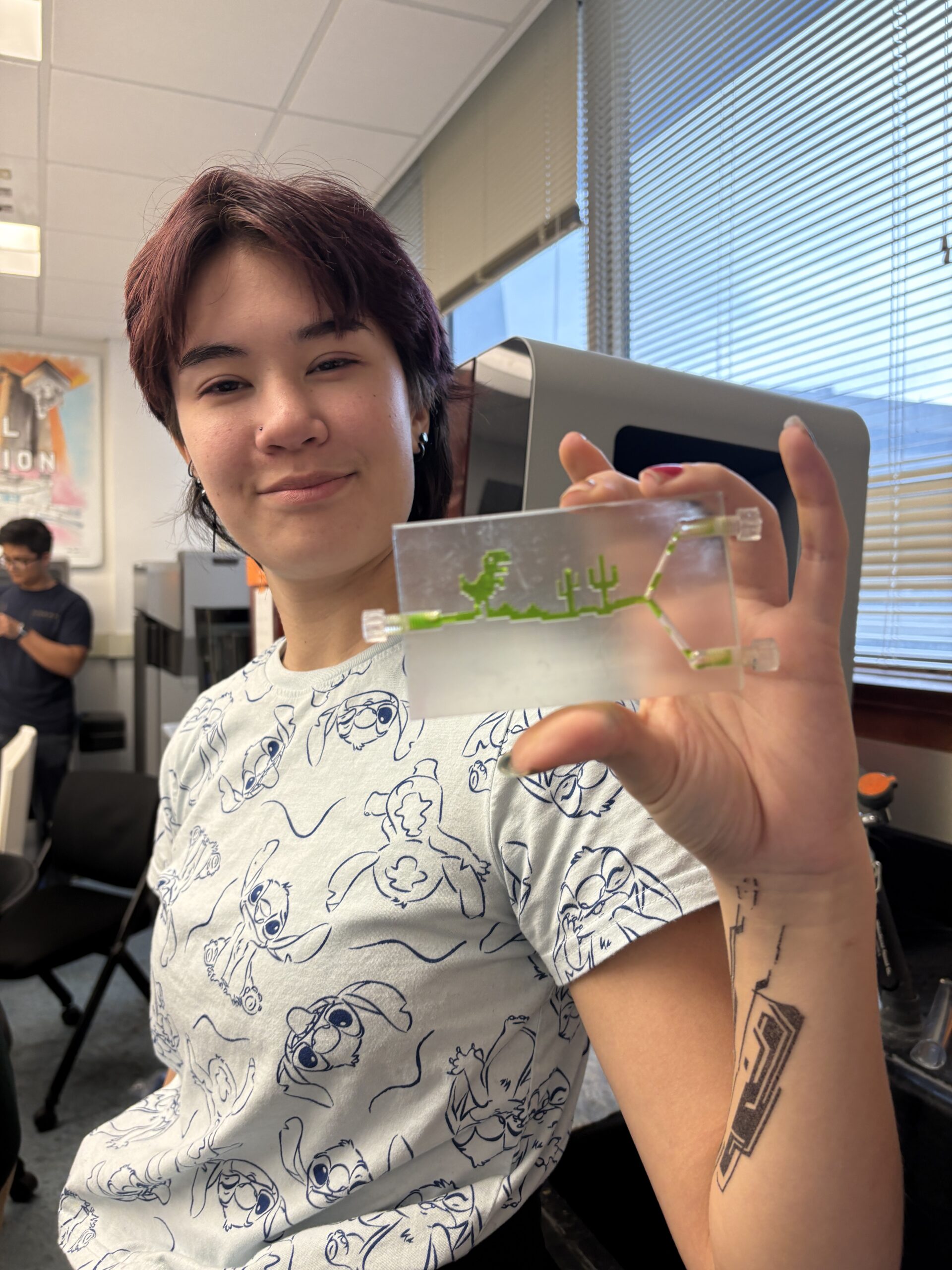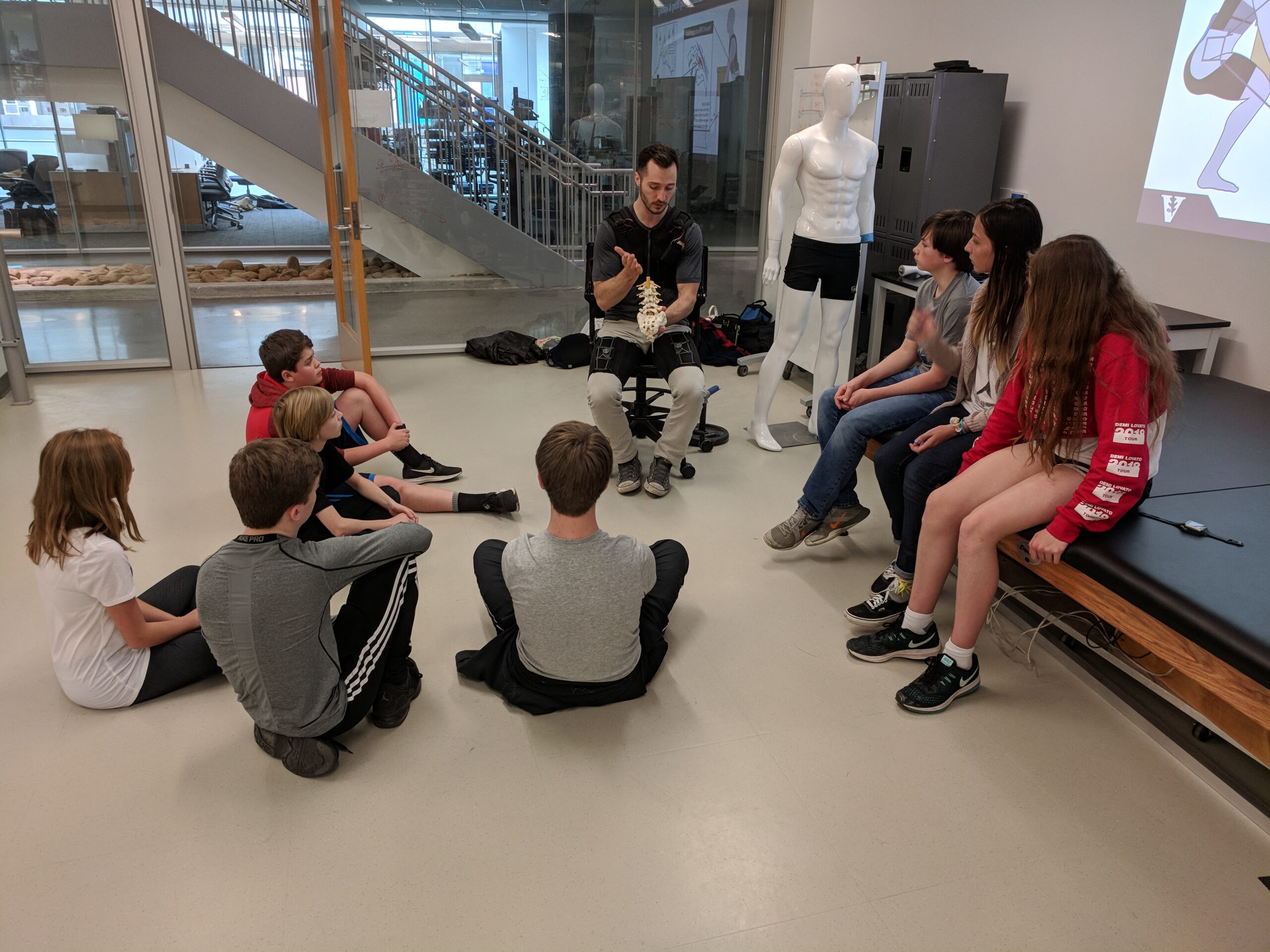Grants and Collaborations
Broader Impact Statements

As a part of her Broader Impact, Dr. Jessica Oster, VU faculty member in Earth and Environmental Sciences worked with high school students in the School for Science and Math at Vanderbilt on a project that used information from cave deposits to model prior climate conditions. The project “Paleoclimatic Reconstruction of Early Holocene Coastal California” was chosen as a semifinalist in the prestigious Siemens Competition in Math, Science and Technology and was presented by Jansen at the American Geological Society Meeting in Denver, Colorado.
The Collaborative for STEM Education and Outreach (CSEO) supports Vanderbilt faculty by helping them to develop, implement and evaluate broader impact activities, based on the evaluation criteria published by the NSF-funded Center for Advancing Research Impacts in Society (ARIS).
ARIS releases annual reports highlighting some of the achievements from the previous year. These broader impact activities range from increasing public awareness and improving societal well-being to discoveries that will transform the way we live.
While the Broader Impact Statement is specific to NSF/ARIS guidelines, the CSEO also offers support for non-NSF funding bodies who are looking to translate their research to the broader community.
Through various programs, the CSEO has linkages to many government and non-government agencies, including local community organizations. We are also eager to partner with VU and VUMC researchers to generate broader impact and community outreach grant proposals for mutual benefit. Our strong relationship with Metro Nashville Public schools enable us to bring STEM opportunities to K-12 through both new and existing frameworks (see below). We look forward to meeting with PI’s to develop a collaborative vision and to realize the subsequent implementation.
Below are links to CSEO programs with opportunities for broader impact activities. Click the links to learn more about how you can collaborate with one of these programs:
School for Science and Math at Vanderbilt
Interdisciplinary Science and Research Program
Scientist in the Classroom Partnership
For more information please call (615) 322-7132 or email Dr. Angela Eeds, Executive Director of the Collaborative for STEM Education and Outreach.
News Stories
To Get Kids Interested in Science, We Have to Let Them Do Science
Vanderbilt-led NASA Satellite Mission Enters Implementation Phase
Highlighted Partnerships
 The CSEO works closely with both our school district and multiple university faculty, staff, and student partners for mutual benefit. Vanderbilt professor of cell and developmental biology, Dr. Marija Zanic, partnered with the CSEO to create a Broader Impact plan for her submitted NSF grant “Elucidating how microtubule-microtubule interactions drive the dynamic reorganization of the microtubule cytoskeleton (NSF-ID)”. With the support of this funded grant, a new graduate level course was created and has now been taught for four years, “Cell Biology: Training in Scientific Outreach” (CBIO- GS8332). Several members of the CSEO team worked with Dr. Zanic and co-instructor, Dr. Jason MacGurn, to design and implement this course. CSEO team members teach several lectures in this course about pedagogy, outreach initiatives, and understanding standards. Students in this course then visit the Day of Discovery middle school program to observe hands-on lessons and instruction before then designing their own hands-on lessons that they have the option to test with the Day of Discovery students and then implement in an MNPS middle school. In this example, there is a benefit to the university in the Broader Impact being a part of a funded grant and to the graduate students who get unique exposure and experience with education and outreach. Reciprocally, middle school students and their teachers benefit from the addition of novel, hands-on instructional activities as well as exposure to scientists that benefit their core curriculum and reinforcing course learning standards.
The CSEO works closely with both our school district and multiple university faculty, staff, and student partners for mutual benefit. Vanderbilt professor of cell and developmental biology, Dr. Marija Zanic, partnered with the CSEO to create a Broader Impact plan for her submitted NSF grant “Elucidating how microtubule-microtubule interactions drive the dynamic reorganization of the microtubule cytoskeleton (NSF-ID)”. With the support of this funded grant, a new graduate level course was created and has now been taught for four years, “Cell Biology: Training in Scientific Outreach” (CBIO- GS8332). Several members of the CSEO team worked with Dr. Zanic and co-instructor, Dr. Jason MacGurn, to design and implement this course. CSEO team members teach several lectures in this course about pedagogy, outreach initiatives, and understanding standards. Students in this course then visit the Day of Discovery middle school program to observe hands-on lessons and instruction before then designing their own hands-on lessons that they have the option to test with the Day of Discovery students and then implement in an MNPS middle school. In this example, there is a benefit to the university in the Broader Impact being a part of a funded grant and to the graduate students who get unique exposure and experience with education and outreach. Reciprocally, middle school students and their teachers benefit from the addition of novel, hands-on instructional activities as well as exposure to scientists that benefit their core curriculum and reinforcing course learning standards.
 The School for Science and Math at Vanderbilt (SSMV) is collaborating with researchers from Vanderbilt University as part of a Future Manufacturing Research Grant (FMRG) to provide high school students with hands-on experience in digital fabrication, biomanufacturing, and extracellular vesicle biological research.
The School for Science and Math at Vanderbilt (SSMV) is collaborating with researchers from Vanderbilt University as part of a Future Manufacturing Research Grant (FMRG) to provide high school students with hands-on experience in digital fabrication, biomanufacturing, and extracellular vesicle biological research.
At the classroom level, SSMV student cohorts design and manufacture microfluidic devices—small-scale lab-on-a-chip systems used in biomedical applications. Bridging engineering and biotechnology, students learn computer-aided design (CAD) and participate in resin 3D printing and microfluidic device fabrication. By utilizing vat photopolymerization (VPP) 3D printing, students learn how digital fabrication can make microfluidics more accessible and scalable for research and industry. In addition, two students annually are matched with investigators through this grant to do a year-long, immersive research internship in a campus laboratory. These students complete a small research project that they present at a summer symposium and additionally submit their research for publication and consideration in the most prestigious high school STEM competition, the Regeneron Science Talent Search.
This collaboration is part of a broader Education and Workforce Development Plan, which seeks to equip students with technical skills and real-world STEM experiences, preparing them for future careers in biotech, bioengineering, and digital manufacturing.
 The Center for Rehabilitation Engineering and Assistive Technology (CREATe) at Vanderbilt University’s School of Engineering has partnered with CSEO programs, including the SSMV, ISR, DoD, and SHIRE, to share their excitement for STEM and ignite students’ curiosity. Their commitment to science outreach and educating the public is extraordinary and the CSEO is happy to support their work.
The Center for Rehabilitation Engineering and Assistive Technology (CREATe) at Vanderbilt University’s School of Engineering has partnered with CSEO programs, including the SSMV, ISR, DoD, and SHIRE, to share their excitement for STEM and ignite students’ curiosity. Their commitment to science outreach and educating the public is extraordinary and the CSEO is happy to support their work.
CREATe has created methods to engage with them and their science. Their Outreach Website includes a playlist of virtual outreach videos, discussion questions for students, and an invitation to meet with the scientists and engineers behind this research.
We encourage all teachers and community partners to find ways to incorporate these videos and potential hangouts into their classrooms.
